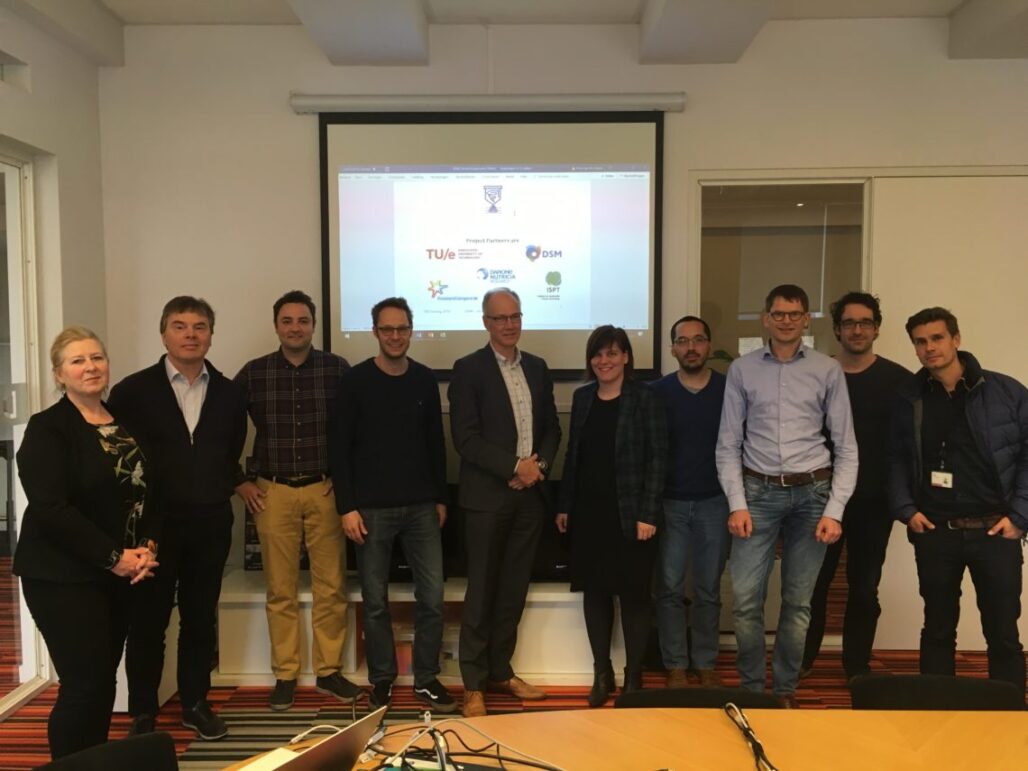To meet the goals of the Dutch climate agreement the industry will need to greatly reduce their greenhouse emissions. One way of doing this is by reducing the energy requirements for the different industrial processes. Of these processes, the drying process is especially energy intensive. A method that is often used in the food industry is spray-drying. This is a method where the fluid is sprayed through hot air in order for it to dry. It is used to turn, for example, liquid milk products into functional powders.
By developing a fundamental understanding of the complex fluid dynamics inside the nozzle as well as in the liquid sheet breakup, the EEMS project aims to formulate recommendations for design and operational principles to optimise the spray drying process.
EEMS helps drying milk products using less energy
EEMS stands for Energy Efficient Milky Sprays, is a collaboration of the Institute for Sustainable Process Technology (ISPT), Friesland Campina, Danone/Nutricia, DSM and TU/e. Together they will study the effects of high solids content and of the main constituent components of model liquids on atomization efficiency of the nozzle. Ultimately this will lead to recommendations for design and operational principles to optimise the spray drying process.
Understanding non-Newtonian flowing fluids to maximise efficiency
When drying, for example milk, a liquid with typically 50% solids content (with the absolute level highly depending on composition) is first atomized in a high pressure atomizer and then dried under the influence of hot air. The internal liquid flow in a high pressure swirl nozzle largely influences the liquid sheet breakup and it therefore determines the droplet size distribution.
This in turn determines the spray drying’s efficiency and the product quality. Liquids that contain high solid contents are typically highly viscous and depending on their composition they can exhibit what is referred to as a ‘non-Newtonian flow behaviour’. This means that the fluid does not follow Newton’s law of viscosity that states that there is a constant viscosity independent of stress. A non-Newtonian behaving fluid can, when under force, change to either more liquid or more solid.
Optimising industrial energy use by understanding drying mechanics
Currently the level of understanding of the non-Newtonian flowing of liquids is not yet sufficient to allow for a higher solids loading. It does have the potential to lead to a 20% energy reduction, because more of the liquid can be evaporated if this behaviour is better understood and a more efficient evaporator can be constructed. Understanding drying mechanics on this very fundamental level offers real and potentially profitable solutions for the industry.
Because drying is a process that is used throughout the food industry but also in many other industries this understanding and the applications of it could have a far reaching effect in the optimisation of industrial processes over many different sectors.
The members of the EEMS project:

Acknowledgement
This project is co-funded by TKI-E&I with the supplementary grant 'TKI- Toeslag' for Topconsortia for Knowledge and Innovation (TKI’s) of the Ministry of Economic Affairs and Climate Policy.
